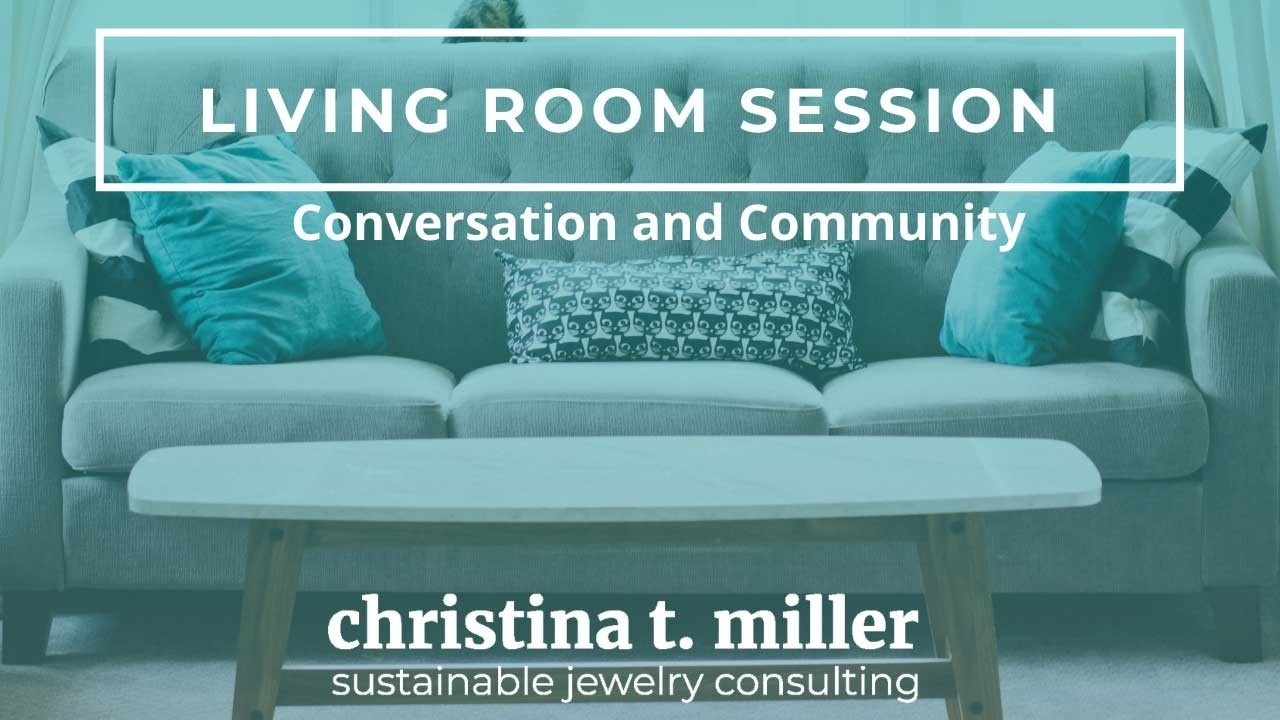
Living Room Session: Gold Mining in Chocó, Colombia
Dec 19, 2020Thank you for joining us in our most recent Living Room Session on artisanal gold mining and traditional jewelry in Chocó, Colombia with Juana Mendez and Ana Maria Sierra!
Check out the Takeaways below.
• Chocó, Colombia has a historical and complicated relationship between its indigenous population, gold mining, and the environment. With an extensive virgin rainforest on the western coast of the country and rich biodiversity, the sustainability of natural resources is embedded in much of the local culture and economy. The region is primarily inhabited by indigenous people, and by a large Afro-Colombian population- whose history in the area and relationship with gold is heavily tied with slavery.
• Gold mining is ingrained in the history and culture of Chocó. The traditional methods used by a small group of miners are extraordinarily sustainable and create a circular system of economic value for the community. Environmental stewardship is key for these groups as a form of social and economic security.
“The native population is aware that as soon as more industrial scale mining starts taking place in their territory, the environmental effects will be so harsh that it compromises the future of gold, even though it is part of their identity - this is the challenge”
-Juana Mendez
• The traditional way of mining is in family units, taking gold in little bits. Some gold is used to make jewelry - which is part of the cultural identity in Chocó, some gold is sold to sustain daily life. This kind of sustainable productivity allows the rest of the gold to remain in the ground and it is saved for future needs - like an investment. Furthermore, the peoples’ intimate relationship with gold in the territory is an extension of their culture and background.
• Alternatively, in a mechanized mining process, machines dig what they can and push gold deeper into the ground, making it harder for artisanal mining communities to access. These mechanized processes do not just make artisanal mining more difficult - they disrupt the cultural fabric of the community and sustainability of their livelihoods, which can have generational financial impacts.
“In this region, illegal and illicit mining didn’t just break biodiversity, but also the backbone of the local economy, that also is embedded with culture.” -Juana Mendez
• Based on Juana Mendez’s research, almost all of the mechanized gold mining in the region is illegal or illicit, used for money laundering, and funding organized criminal groups. The native population is working to sustain their culture, heritage, and way of life tied to sustainable artisanal mining practices in the face of aggressive, controlling, and illegal violations to their land. The rise of gold prices due to COVID-19 is accelerating the loss of forests, mercury pollution, and destruction of biodiversity in the area - all compromising the communities’ economic security and identity.
• In the search for solutions, Juana Mendez and Ana Sierra state that we are still in an awareness raising phase and that initiatives to address the challenges must be informed by the indigenous population. One potential idea to support the generational wealth currently compromised by illegal mining activity is to create a small, informal fund and pilot program to support the circular economic system in the area tied to gold and jewelry. Without action, Juana fears the tradition of gold mining and cultural heritage of the population is at risk of disappearing
• Applying certifications and standards in a region like Chocó is filled with challenges. Despite good intentions, these schemes often ignore the circuit between subsistence mining, jewelry, and local economies. Ana Sierra stresses the need to deeply understand small local economies in these schemes. While the government is open to such schemes, there is very little support for artisanal miners in the formalization process.
Resources provided by our guest, Juana Mendez
For an overview of the situation facing jewelers and artisanal miners.
Video with English Subtitles, Video con subtítulos en inglés:
https://www.youtube.com/watch?v=pWdeFkz6aHI&t=170s
Similar video as above, with additions and in Spanish,
También se puede acceder desde Vimeo, sin subtítulos:
https://vimeo.com/179075380
The Catalogue Juana has compiled on Afro-Chocoana Jewelry
Catálogo de la joyería afrochocoana:
https://programaacua.org/wp-content/uploads/2020/02/Catalogo_compressed.pdf
Website for the ACUA Foundation, Página de la Fundación ACUA:
https://programaacua.org/
La Fundación ACUA es una organización sin ánimo de lucro cuyo objetivo principal es promover el desarrollo de las comunidades rurales y urbanas a partir de la generación de ingresos y la valorización de sus activos culturales por medio de los intercambios de saberes, la investigación y el reconocimiento social, institucional y académico de los saberes tradicionales. Así mismo la Fundación ACUA fortalece la capacidad de sus instituciones asociadas o vinculadas que realicen actividades a favor de las comunidades urbanas y rurales, incluidas las asociaciones comunitarias.
The ACUA Foundation is a non-profit organization whose main objective is to promote the development of rural and urban communities through the generation of income and the valorization of their cultural assets through the exchange of knowledge, research and recognition. social, institutional and academic of traditional knowledge. Likewise, the ACUA Foundation strengthens the capacity of its associated or linked institutions that carry out activities in favor of urban and rural communities, including community associations.
Join Our Community
Stay up-to-date with our latest content, industry news, and more.
Check your Inbox/Junk folder to confirm you want to receive emails from us. Don't worry, your information will not be shared.

